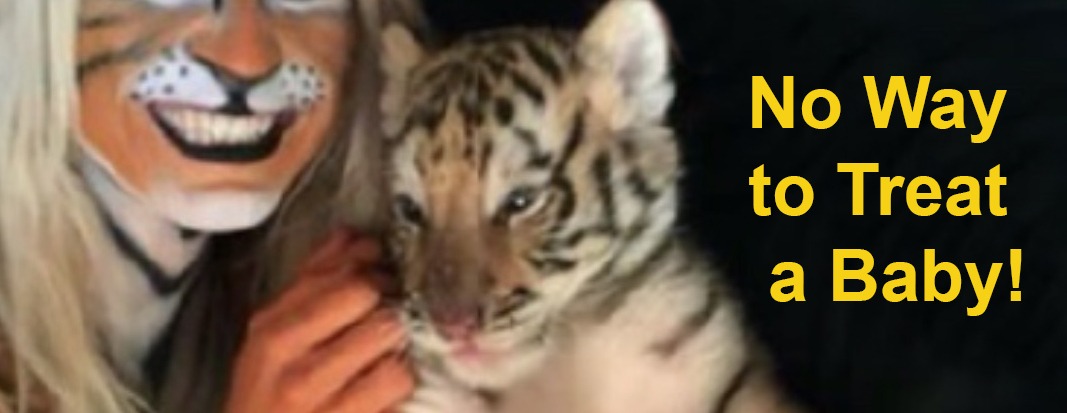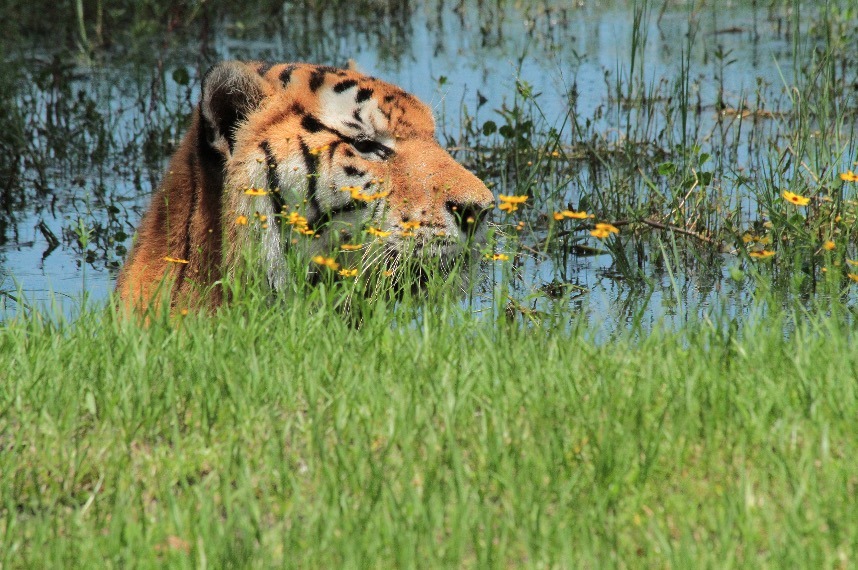2010 Big Cat Wins in Florida
2010 Big Cat Wins in Florida
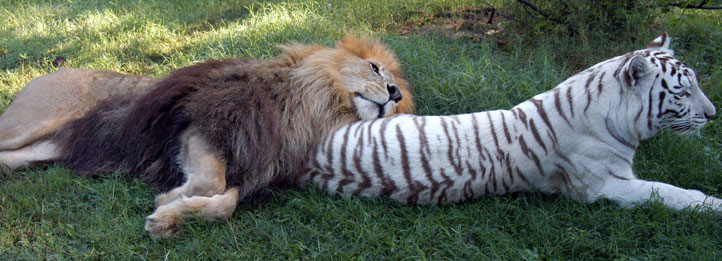 I find this hard to write. I have put it off for two days, but need to record it while it is still fresh in my mind and while I have the notes, sent out as Tweets, from the momentous day; September 1, 2010. It is easy for me to write when I am impassioned against some terrible wrong. The words flow fast like our creek does following a brush with a hurricane; so fast in fact that it takes a lot of editing to make sense of it all sometimes. But now, in the wake of this long and frustrating battle, I find myself exhausted as if finally swimming ashore from some distant shipwreck I find the oasis of sand so soothing as to lay down my face and sleep for a week or two or eternity…
I find this hard to write. I have put it off for two days, but need to record it while it is still fresh in my mind and while I have the notes, sent out as Tweets, from the momentous day; September 1, 2010. It is easy for me to write when I am impassioned against some terrible wrong. The words flow fast like our creek does following a brush with a hurricane; so fast in fact that it takes a lot of editing to make sense of it all sometimes. But now, in the wake of this long and frustrating battle, I find myself exhausted as if finally swimming ashore from some distant shipwreck I find the oasis of sand so soothing as to lay down my face and sleep for a week or two or eternity…
Were it completely over I might give in to that temptation, but it’s not, so I’d like to share where we have been, what has been accomplished and how you can help us end an era of abuse and exploitation. This story starts in 1994 when I attended my first Florida Wildlife Commission meeting. I think they called themselves Game & Fish back then and that is the name that I always have to dismiss from my tongue in search of whatever they are calling themselves most recently. The legislature had put into statute in 1967 that the trade in wildlife was to be regulated, but it wasn’t until 1974 that the legislature addressed the growing concern of people keeping lions and tigers as pets with a second statute. Bare bones rules were enacted, but were not revisited until 1994 when killings, maulings and escapes by big cats first peaked. They seem to have been trying to reinvent themselves to remain relevant, while still clinging to the practice of killing animals for fun, which is not an activity embraced by 99% of Floridians and 97% of Americans overall. Their rule enhancements did nothing to stop the escalation of killings, maulings and escapes which nearly doubled by 2003.
I still remember that 1994 meeting and having signed up to speak my heart was pounding so hard that the pressure threatened to send a spray of blood out my nose, eyes and ears. Speaking before a crowd and addressing this agency that had dealt so treacherously with me before were the last thing in the world that I wanted to do, but I felt it was important. They were asking for stakeholder input on some new cage regulations and given the inhumanely small cages that were currently legal in the state, I just had to be there. When I stood to speak I nearly passed out, but remained standing, clutching the chair in front of me, and said what needed to be said despite the fact that the room had closed in dark around me and I was unable to see or hear anything but the sound of jet engines roaring in my head. I relayed how we has started out with cages that were many times the size of their minimums, but had discovered that the cats would let you know when you had it right. They would quit their incessant pacing if they had more room. Their new rules, which were a minor improvement but still far short of humane, were implemented in 1998.
 From 1999 until 2003 Big Cat Rescue worked to support the Captive Wildlife Safety Act which was a federal bill that prevented the sale of big cats, (lions, tigers, leopards, jaguars, cougars and cheetahs) across state lines as pets. The number of cats we had been called upon to rescue had been doubling every other year and in 2003 we had to turn away 312 big cats who had been bred for use as pets and props and now had outgrown their profitability. When the Captive Wildlife Safety Act passed, the next year the number we had to turn away dropped to 110 and has continued to drop every year. This proved conclusively that the best way to save the most big cats was through legislation as we could only afford to rescue 5 or 6 cats each year whereas better laws had prevented the birth and abandonment of hundreds of big cats, mostly tigers.
From 1999 until 2003 Big Cat Rescue worked to support the Captive Wildlife Safety Act which was a federal bill that prevented the sale of big cats, (lions, tigers, leopards, jaguars, cougars and cheetahs) across state lines as pets. The number of cats we had been called upon to rescue had been doubling every other year and in 2003 we had to turn away 312 big cats who had been bred for use as pets and props and now had outgrown their profitability. When the Captive Wildlife Safety Act passed, the next year the number we had to turn away dropped to 110 and has continued to drop every year. This proved conclusively that the best way to save the most big cats was through legislation as we could only afford to rescue 5 or 6 cats each year whereas better laws had prevented the birth and abandonment of hundreds of big cats, mostly tigers.
Over the years I continued to attend their meetings but 2005 was the beginning of a five year investment that Big Cat Rescue would put into improving the rules that regulate the possession of wild animals. I attended countless stakeholder meetings, watched in horror as their Captive Wild Animal Technical Assistance Group made one self serving suggestion after another in the hopes of making it easier for the 9 out of 11 of them to deal in wildlife and I attended most of the Commissioner hearings. The only people who attended these meetings were people who own and exploit wild animals and who spoke out loudly against any change that would provide a modicum of comfort for the animal or safety for the public. There were three of us, and sometimes four, who I could count on to be there as a voice for the animals; Dr. Jennifer Hobgood from HSUS, Lori or Liz from Defenders of Wildlife & Heather Veleanu (who has now moved to PA.) We would huddle together like a 3 headed cat looking in all directions for an attack by one of the breeders, dealers or egotists who fancied the idea of a pet tiger.
And attacked we were, albeit mostly just vile verbal attacks from people like Vernon Yates, Alan Rigerman, Gloria Johnson & Lisa Welch among others who wouldn’t curse me to my face, but hissed the evil they would do to me as I passed. Others including Kevin Antle of T.I.G.E.R.S, Zuzanna Kuko of R.E.X.A.N.O., Joe Schreibvogal of G.W. Exotics and others have slandered us on the Internet. Dr. Hobgood had her car broken in to and her computer stolen and I have been ushered out of the building more than once by armed FWC officers who sought to insure my safety until I wasn’t their responsibility (read off their property.) In one instance I had a police escort until I was completely out of the city limits on the interstate headed home one night after an FWC meeting. There was even a hotel in the Florida Keys that would not allow me to stay in their facility overnight for fear of what the animal terrorists might do to me. I had tried to hire a body guard for that meeting, but a last minute overbooking on their end left me exposed. A friend of Mario Tabraue, of Zoological Imports, who had been sent to prison for a 100 yr sentence for 61 counts of racketeering, drug trafficking and murder of a ATF informant, but was released early because he had been used as an informant, had assured me that any trip of mine to So. Florida would not include a return home.
Our vehicles were often the target of the animal terrorists and Big Cat Rescue had to replace 12 tires over the course of these past 5 years from someone slicing our valve stems. The tire experts said it had been done maliciously so that at high speeds the tires would blow simultaneously and this had happened to my daughter as she was driving a van load of interns one night. I couldn’t share much more of what was being threatened against me because I needed to be there for the cats and if my husband or family knew what I was up against they would never have allowed me to be in such peril. I take a deep sigh of relief knowing that we have finally reached a tipping point and even though I will not be liked by some of the animal abusing miscreants at future meetings we finally outnumber them.
In this recent five year ordeal cage size minimums were never even considered. They limited the scope of their work to redefining Class I (big cats), Class II (medium sized cats) and Class III (small cats) minimum acreage requirements for possession Class I and Class II, reset violation penalties and looked at how to resolve the clash between their agency issuing permits to people to own dangerous animals and the counties trying to prevent such possession in inappropriate neighborhoods. I tried to make it easy for them and affordable for tax payers. I took their 67 pages of rules and using all of their same terminology and formatting crafted new rules that would prevent the future breeding of captive wild animals, except for legitimate species survival plans administered by AZA zoos.
The draft would enhance the safety of the public and the welfare of the captives so that no animals would be displaced and thus would allow owners to keep their animals until they died of old age, but they would not be able to buy, breed, trade or sell to replace them. The rules put the burden of identifying and accountability upon the exotic animal owner and called for these records to be publicly available because there are plenty of watchdog groups who would make sure the rules were not being broken. This would save the FWC and thus the taxpayer from having any additional expense for all of the additional improvements.
I presented this document with all of the corroborating evidence that proved its viability within days of the FWC announcing that they would be reviewing their rules. I created charts of all of the killings, maulings and escapes since 1990 showing that even though FL only accounts for 6% of the national population it accounted for 12% of the 602 reported incidents. I tracked how other states had passed bans and how their numbers of killings, maulings and escapes dropped dramatically and in most cases to zero. With the help of google sites I even created a national database that could be monitored by USDA or any state agency whereby licensees would be required to update their records of births, deaths, sales and trades in real time so that inspectors could watch for trends and have an updated checklists in hand when they did their annual inspections so they could easily determine if the licensees were reporting accurate numbers. Neither the USDA nor the FWC wanted any part of a simple solution. Where is the job security in that?
The whole five year process seemed more to me like an excuse for FWC staff and commissioners to get to spend time in luxurious resort hotels on the beach and road trips all over the state than any real effort to get things done. The stakeholder meetings only allowed for a person to have 3 minutes at the mic to present their case with no visuals and no one in the audience other than the people who made their living from dealing in exotic animals. Determined not to be ignored I solicited photos of Florida’s abusive situations from our 60,000 supporters and posted the images, the charts of escalating killings, maulings and escapes and petitions and letters for them to send to the FWC and USDA on the Internet. As a result tens of thousands of letters were written by people who care about animals to the FWC and USDA during this time asking that the trade in exotic cats be banned. When the FWC dismissed the emailed letters as being unimportant, I wheeled hard copies of the letters in stacks of boxes on a furniture dolly to make the point. I printed out the images of the decrepit Florida facilities and the sad cats languishing in their own feces and laid copies for each Commissioner at their chairs along with copies of the charts, maps and where they could find more information online if they cared at all.
One of the problems the FWC admitted to a reporter when they said, “In a perfect world we would know where all of these animals are.” was that they didn’t have good records that told them what nor how many wild animals were held. In some cases only P.O. boxes or out of state addresses were listed for licensees who clearly had dangerous animals inside the state. Using a combination of USDA, FWC, newspaper mentions and eye witness reports, I created the first map to show where exotic cats were within the state. From 1967 when there were 1,000 people in possession of captive wild animals the number rose to 8,000 by 1994. As the rules have been made even slightly more restrictive the number of wild animal possessors have dropped to 4,000 in 2008. Despite this drop, Florida big cat incidents continued to climb against the mirrored decline across the nation. The reason is that eight states passed bans or partial bans since 2005 while the FWC just piddled around with a few inconsequential improvements to their rules. The indisputable conclusion here is that regulation can’t work; only outright bans do.
The reason for that is enforcement. There will never be enough tax money available to enable adequate inspections and there is only a dis-incentive for inspectors at the state or federal level to do their job, because to do so only results in them being perceived as the “bad guys.” If an inspector sees animal abuse and cites the owner, there is an expectation that they do something about it if the owner doesn’t comply. The kind of people who keep exotic animals in cages for their own amusement or financial gain are not the kind of people who care about following the rules. If the inspector continues to cite the owner, year after year for the same infraction, then the watchdog groups can report to the public that the government isn’t doing their job. The problem is that there is no where for the wild animals to go if they are confiscated. Zoos want to breed babies for a paying public to see, so they don’t want adults. Sanctuaries are over flowing and under funded and cannot possibly handle the influx of unwanted adult wildlife. The only alternative available to the government, if they do their job and seize an abused wild animal, is to euthanize the animal and that is a public relations nightmare that no one wants to consider.
The result is that the inspectors don’t report the abuse they see and in most cases the abuses are hidden from public view so that they are unknown and ignored. The Animal Enterprise Terrorism Act was a law pushed through Congress in 2006 by the animal abusive industries such as biomedical and factory farms which made it a federal crime of terrorism to trespass for the purpose of documenting abuse. The law is so overly broad and vague that it will not withstand challenge, but has had a chilling effect on whistle blowers and undercover investigations, which was its creators’ intent. While it was proposed as a counter to animal extremists, they were breaking the law already and wouldn’t care about a new one. This law only made it harder for people who care about animals to show others what really happens behind closed doors and gates.
The past five years have really been a roller coaster ride of wins and losses for the animals. Even though the Captive Wildlife Safety Act passed in 2003 there was no rule enacted to enforce it until 2007 and it was deeply flawed until 2009. I look at that sentence and think to myself how amazing it is that six years of frustration, letter writing, calls to Congress and to the U.S. Fish & Wildlife Service and USDA and the Secretary of the Interior and all of the hard work of thousands of our supporters and other animal welfare organizations and their supporters; how all of that effort went into what can be summed up in one sentence…in one result: the banning of trade in big cats across state lines as pets. Its text doesn’t look like much on this page, but if you consider the trend of unwanted big cats doubling every other year that was halted by this one law, and do the math, then there were easily 2,500 big cats who were spared being brought into this world for the purpose of being used as ego props. That made all of the blood, sweat and tears worthwhile.
Back at the state level the final rules have been proposed by the FWC after all of our combined efforts. The results are far more modest than what we have been able to do at a federal level, but as to just exotic cats they include:
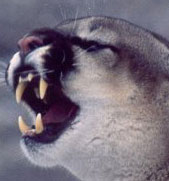 1. Cougars can no longer be kept as pets. Existing pets can remain where they are, but cannot be replaced unless the owner upgrades their facilities to house Class I animals, which means 5 acres, instead of 2.5 acres and stronger cage material. It also means cougars are added to the list of big cats that cannot be walked on leashes in public or handled by the public after reaching 40 lbs according the the FWC in contrast to the the age of 12 weeks according to USDA provisions.
1. Cougars can no longer be kept as pets. Existing pets can remain where they are, but cannot be replaced unless the owner upgrades their facilities to house Class I animals, which means 5 acres, instead of 2.5 acres and stronger cage material. It also means cougars are added to the list of big cats that cannot be walked on leashes in public or handled by the public after reaching 40 lbs according the the FWC in contrast to the the age of 12 weeks according to USDA provisions.
2. Bobcats who are trapped as “nuisance wildlife” cannot be killed, but rather must be turned loose on 40+ acres in the same county where trapped.
3. Anyone who possesses a Class I animal, such as a lion, tiger, bear, etc. must post a $10,000 bond to protect the public in case of injury or escape.
4. Those who possesses a wild animal must disclose where the animal is kept; ie a physical address.
5. In the past the FL statutes read that a person could not keep a Class I animal as a pet, and thus had to be a commercial enterprise in order to possess lions, tigers and other big cats. The USDA requires that anyone using a wild animal for a commercial purpose must be licensed by USDA but the FWC ignored that federal requirement and allowed that all a person had to do was to claim they were a business in order to keep a tiger in their back yard. The new Florida rules state that if you are required to have a USDA license by claiming your wild animal is a commercial enterprise, then you must have that USDA license in order to qualify for a FWC license. This will flush out many of the back yard breeders who will now have to comply with USDA standards which are minimal, but in many cases superior to FWC standards. For example the FWC does not require than animals be given veterinary care, wholesome food nor clean cages which are mandated by the USDA.
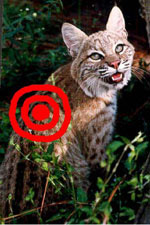 6. Fox penning was a FWC sanctioned form of animal fighting whereby bobcats, foxes and coyotes would be released into caged areas and hunters would turn packs of dogs loose to chase and kill the wild animals. The wildlife would be ripped, limb from limb by the baying hounds and all in the name of “training” and sportsmanship. When a neighboring family to one of these 16 licensed fox pens alerted us in 2009 to the activities happening in broad daylight, seven days a week at one of these “fox pens” we began a crusade with our supporters to shut them down. We succeeded in the fall of 2010 with a complete ban on the practice of turning dogs loose on bobcats, foxes and coyotes in fenced areas.
6. Fox penning was a FWC sanctioned form of animal fighting whereby bobcats, foxes and coyotes would be released into caged areas and hunters would turn packs of dogs loose to chase and kill the wild animals. The wildlife would be ripped, limb from limb by the baying hounds and all in the name of “training” and sportsmanship. When a neighboring family to one of these 16 licensed fox pens alerted us in 2009 to the activities happening in broad daylight, seven days a week at one of these “fox pens” we began a crusade with our supporters to shut them down. We succeeded in the fall of 2010 with a complete ban on the practice of turning dogs loose on bobcats, foxes and coyotes in fenced areas.
7. The last win was the weakest in language adopted by the FWC, but may have the most impact in practice. The FWC stipulated that whenever there is a new application for a Class I license, or if someone upgrades to a Class I license, they will notify the county. Our proposal and that of tens of thousands of animal lovers was that cities, counties and municipalities be given the authority to craft even more restrictive ordinances to insure the humane treatment of animals and the safety of their citizens. The state of Florida is unique in that the FWC was granted extraordinary power by virtue of a constitutional amendment and have interpreted that to mean that only they can determine appropriate neighborhoods for the possession of wild animals. This conflicts with the counties’ authority to decide land use and zoning so there have been a number of squabbles over what is or isn’t an appropriate neighborhood to have a tiger kept in a cage the size of a parking space. While the FWC did not formally concede to the counties’ interest, they have at least agreed to let counties know when someone plans to bring lions, tigers and bears to their area.
What the counties, cities and municipalities can do from here may well have to be decided in another constitutional amendment that curtails the FWC’s control over an issue they have handled so poorly. Online polls show 84% support for such a constitutional amendment. Meanwhile a landmark case is playing out in Levy county that will set the stage for what happens next.
In some ways the 7 wins for the cats above don’t seem like much for all of the effort that went into it, but it reminds me of the story about the man who watched a boy throwing beached starfish back into the sea. As the man looked down the miles of shoreline and chided the boy that he couldn’t make a difference for all of the hapless starfish, the boy tossed another one back into the surf and replied that it made a difference to that one.
While the report above is told from my vantage point, I was only one person involved in these changes. There were thousands of others who did what they could and many who pushed beyond their own limitations to come in person to speak up for the animals. At the June FWC hearing the animal lovers outnumbered the animal terrorists 52 to 20. By the September FWC hearing the animal protectionists outnumbered the animal exploiters six to one. As a result there are thousands of exotic cats who won’t be bred into lives of confinement and deprivation. Bobcats won’t be trapped and sold into situations where they are used as dog bait. The public now has some small recourse against the $10,000 bond if they are injured or sustain damage from a large captive wild animal and the increased requirements mean that there will be less likelihood of living next door to lions, tigers and other big cats. To the people who won’t lose life and limb because of this past five years’ worth of work, it means everything to them, even if they never know that they are the beneficiary of the work. To the animals who will be spared lives of misery it also means the world.
Video of a FL Exhibitor Being Thrown out of New York
https://youtu.be/wHGecoZZuwE
All in all it was worth it but there is still much to be done. We will continue to seek out the truth and expose the abuses. We will continue to ask you to join us in making a difference.



